MARKET OVERVIEW
The global neurosurgery market in the healthcare industry will continue to be at the cutting edge of managing diseases of the brain, spinal cord, and peripheral nervous system. The market will be marked by a continued convergence of surgical therapy, clinical innovation, and advanced medical technology. Neurosurgery as a specialty will require accuracy and specialist treatment, and instruments, services, and systems optimized for complex neurological situations will be required. The global neurosurgery market will also bring together device manufacturers, surgical system companies, hospitals, outpatient surgery centers, and training institutions, all contributing to the infrastructure that will be supporting neurosurgical procedures. The market will encompass a broad array of instrumentation and technologies that enable cranial and spinal procedures. Surgical microscopes, ultrasonic aspirators, neuronavigation systems, stereotactic systems, and robotic surgery platforms will be among them.
Physicians and hospitals will seek out solutions that enhance procedural accuracy and patient protection. As procedural standards evolve, the sector will rely on a sequential development of operating room abilities, from integrated imaging to AI-based diagnostics. Product planning and purchasing behavior will be influenced by demand for minimally invasive procedures, impacting institutions and geographies. The global neurosurgery market will be impacted by neurology centers and research institutions, which will be involved in a major way in clinical validation of new therapy and tools. Their involvement will be instrumental in establishing safety standards, refining techniques, and embracing evidence-based practices. Vendors within the market will position themselves based on regional regulatory landscapes, surgical practices, and reimbursement policies.
This will ensure technologies are both clinically and administratively compliant in various healthcare systems. Essentially, the global neurosurgery market will be driven by operating room sophistication. Improvements in real-time imaging and monitoring, intraoperative imaging, and digital simulation will guide surgeons through procedures with increased confidence and clarity. Institutions will be willing to invest in devices that offer ergonomic advantage, reduce operating time, and facilitate enhanced post-surgical outcomes. Integration of software and data platforms will be essential to providing actionable insights to surgeons in the field. Software and hardware will collaborate to set new standards for what is possible in neurosurgical practice. The size of the global neurosurgery market will vary from public hospitals to private centers of care, specialty clinics, and ambulatory surgical centers.
These healthcare centers will spend money on versatile solutions that accommodate their patient volume, degree of clinical experience, and infrastructure. Developing markets will witness the creation of new neurological care units, while developed markets will focus on system enhancements and integration of smart technologies. Training and education centers will also influence the market by offering certification courses and simulation-based learning modules tailored for neurosurgery specialists. The global neurosurgery market will be a critical business within the broader medical technology industry in the coming years. It will be a sign of the collective vision of healthcare providers, engineers, and institutional administrators to improve surgical performance, enhance patient quality of life, and expand access to neurological care. As it continues to grow and cross disciplines, the market will be a catalyst for the evolution of modern neurosurgical practice.
Global neurosurgery market is estimated to reach $6,271.14 Million by 2032; growing at a CAGR of 4.5% from 2025 to 2032.
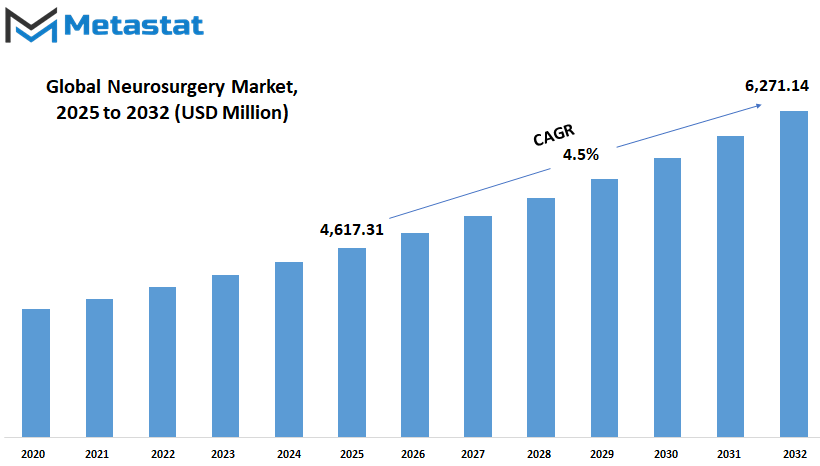
GROWTH FACTORS
The global neurosurgery market is growing consistently, driven by a combination of medical needs and technological progress. With the increased numbers of people worldwide developing neurological disease and brain injury, there is necessarily greater demand for expert surgical treatment. This trend is not only linked with aging populations, but also with the development of diagnostic methods that allow doctors to diagnose conditions earlier than ever before. With earlier diagnosis, there is a greater need for prompt surgical interventions, which is leading providers to look for even more efficient and precise solutions. One of the main forces that will continue driving this market is the improvement in less invasive surgery methods. New technology now allows surgeons to perform procedures with minimal incisions, reducing patients' recovery time and lowering complications.
Technologies that aid surgeons in conducting procedures with more precision, such as imaging technology, are becoming an integral part of many procedures. They aid the surgeon's ability to see what is happening in the brain and make intraoperative choices with more confidence. As these technologies spread more and advance further, they will impact even more the way neurosurgery is conducted. But there are still impediments that would stay this progress. One of the biggest is the cost of the equipment as well as of the procedures themselves. These procedures usually require extremely advanced machinery and a team of experts, so they are expensive for hospitals to offer and unaffordable to some patients.
In the majority of regions, and especially in developing countries, there also does not exist the pool of skilled practitioners or the needed medical facilities to provide such advanced treatments. Without enough qualified neurosurgeons and the necessary facilities, the benefits of these advances cannot be achieved. The future does hold much promise with robotics and artificial intelligence's use in this field. Both can assist surgeons in the planning and execution of procedures even more accurately. As technology continues to evolve, it will assist in the scanning analysis, give prognoses, and even operate robotic arms for surgery. This combination of human capability and machinery assistance will likely make procedures safer and quicker. Eventually, with the spread of these technologies, they will open up new possibilities and facilitate high-quality care to reach greater numbers of individuals. The global neurosurgery market, despite certain challenges, is being steered towards tremendous innovation that will transform the future treatment of brain disease.
MARKET SEGMENTATION
By Product Type
The global neurosurgery market is gradually shaping the future of medical science. As technology is increasingly touching the healthcare practices, the focus towards treating disorders of the brain, spine, and nervous system is getting better. Neurosurgery doesn't employ traditional tools and techniques; instead, it is moving towards safer, faster, and more targeted approaches. This is fueled by a steady demand for advanced solutions, improved diagnostics, and greater awareness of neurological disorders worldwide. The market will hit significant numbers by 2025, reflecting how each type of device will contribute to this growth.
For instance, Neuro Interventional Devices are expected to hit USD 2,503.28 million, showing their critical role in treating vascular disorders in the brain without needing to conduct open surgery.
The devices allow specialists to perform life-saving procedures with reduced recovery time. Neuroendoscopes, expected to hit USD 243.33 million, serve as another case of minimally invasive tools for improving visibility and accuracy during interventions. Neurosurgical Drills, worth USD 231.10 million, are even essential for surgeries involving bones, particularly when working in the vicinity of delicate structures like the skull. Radiosurgery Systems will likely be worth USD 720.30 million. They offer accurate treatment for brain tumors and other abnormalities without damaging the surrounding tissue. It leans strongly towards methods that promote patient comfort and reduce the risk of complications. Dura Substitutes, employed to protect brain tissue intra-op as well as post-op, are predicted to grow to USD 242.41 million.
These work behind the scenes but play a great role in successful outcomes. Surgical tools for procedures are also increasing and extend to around USD 446.73 million, showing how traditional surgical tools are being replaced by more new devices. Finally, the segment "Other," worth USD 230.17 million, covers specialized equipment that allows more tailored treatment regimes. In the future, the global neurosurgery market is sure to see more investment in research and development. As populations of age and neurological conditions increase, clinics and hospitals will continue to rely on better and more efficient equipment. What was previously unimaginable like treating brain diseases with less invasiveness is becoming the standard. This is not about devices but, rather, conceptualizing the way surgeries are conducted, keeping things safe and quality of life intact for patients. With steady progress, the future of neurosurgery will be based on the shoulders of technological innovation and an intense grasp of care for humans.
By Application
The global neurosurgery market is forecast to witness steady growth over the years to come, fueled by the evolution of medical technology as well as increasing demand for successful treatment solutions. With rising awareness of neurological disorders comes the need for safer and more accurate surgical procedures. The future is bright, with innovations set to aid physicians in diagnosing and treating intricate brain ailments more effectively. Imaging system, surgical tool, and robotic innovation will enhance the accuracy of procedures, lessening risk and recovery time for patients. By application, this market addresses a variety of needs.
Aneurysm treatments will become increasingly prominent, particularly as early detection continues to improve. Clinics and hospitals will be poised to manage fine operations, preventing strokes and stroke-related issues. Arteriovenous malformation treatment is another area of importance. With advancing technology, more precision in treating AVMs will be possible, minimizing the risk of long-term injury. Tumors in the brain are also a significant issue, and equipment employed in neurosurgery will continue to develop to facilitate early treatment, safer excision, and improved care after surgery. In carotid artery occlusion or stenosis, the increasing population of elderly patients will most likely urge healthcare professionals to look for quicker and less aggressive treatments. It can potentially curb the occurrence of strokes and consequent complications.
Surgery of cerebrovascular systems, with a view to restoring brain blood flow, is another field that will gain from intelligent devices and continuous monitoring. What this will mean is that patients will receive more individualized treatment, with operations planned specifically for their particular condition. Cortical mapping, previously viewed as a complicated procedure, is becoming increasingly prevalent as equipment becomes easier to operate and navigate. This advancement will enable physicians to identify and preserve vital brain activities while in the operating room. When treating epilepsy, new technology is emerging that can identify targeted areas more accurately, which means more effective results with less side effects.
There are numerous other applications of neurosurgery, ranging from trauma treatment to treating unusual diseases. With artificial intelligence and machine learning taking a greater part, we may expect the global neurosurgery market to provide safer, faster, and more stable care. It will keep moving forward towards solutions that not only add life but also enhance its quality.
By End User
The global neurosurgery market is forecast to expand at a steady rate as the need for sophisticated neurological care rises in various regions of the globe. With medical science advancing, more individuals are being diagnosed with neurological disorders that need surgery. This change is motivating healthcare providers to invest in superior equipment and techniques for coping with such cases with greater safety and precision. Technology will dominate the reshaping of how brain and spine surgeries are performed. From high-definition imaging to robot-assisted surgery, new techniques will be increasingly practiced, speeding up procedures while being more accurate. Hospitals will persist in being the leaders in offering neurosurgery services owing to the fact that they can provide all-around care.
They typically have more funds, trained personnel, and modern medical equipment, so they can treat simple and complicated neurological cases. Patients typically opt for hospitals for serious operations because they are more confident that emergency backup and intensive care are readily available if necessary. As more hospitals improve their neurology section, better quality of care can be expected, and more patients will be drawn. Ambulatory Surgical Centers will also gain significance in the future. These facilities specialize in giving rapid and efficient treatment to patients who do not need to be hospitalized overnight.
With advanced surgical equipment and improved monitoring systems for patients, most forms of neurosurgeries that used to take days in the hospital can now be completed within one day. This is more convenient for patients and less expensive in terms of care. As more individuals seek shorter recovery times and lower costs, theses centers will be used more. Specialized Neurological Institutes, which deal specifically with brain and nerve disorders, will continue to be major players in this market. These institutes recruit the best and concentrate efforts on individual conditions. This makes them prime facilities for new treatment development and new surgical techniques.
Their continued research and patient-centered focus will further make them worth their while. They will most probably be right at the center of shaping and disseminating improved means of conducting neurosurgery in the future. In the years to come, the global neurosurgery market will expand as need and ability increase. The future will be marked by safer, quicker, and more accurate procedures in all forms of medical facilities, allowing patients a better opportunity for recovery and enhanced quality of life.
|
Forecast Period |
2025-2032 |
|
Market Size in 2025 |
$4,617.31 million |
|
Market Size by 2032 |
$6,271.14 Million |
|
Growth Rate from 2025 to 2032 |
4.5% |
|
Base Year |
2024 |
|
Regions Covered |
North America, Europe, Asia-Pacific Green, South America, Middle East & Africa |
REGIONAL ANALYSIS
The global neurosurgery market is slowly defining the future of medical innovation in various regions. As technology continues to expand and medical requirements become increasingly specialized, the relevance of neurosurgery is growing globally. This market is not just driven by innovation but also by how various countries and regions finance healthcare systems. North America, for instance, has been making consistent development with nations like the U.S., Canada, and Mexico being key contributors to research, development, and embracing cutting-edge surgical equipment. These nations will continue to drive development through access to well-trained experts and consistent investments in health infrastructure. In Europe, nations like the UK, Germany, France, and Italy are key drivers in advancing the boundaries of neurological medicine.
These regions enjoy well-established healthcare policies and a high degree of emphasis on medical research. The need for sophisticated brain and spinal surgeries has seen hospitals and clinics in this region implement more precise and less disruptive approaches. The remainder of Europe is catching up slowly, adding to the overall growth as the need for more advanced neurological care increases throughout the continent. Asia-Pacific is rapidly emerging as India, China, Japan, and South Korea aim to increase healthcare access and construct medical facilities that will be able to cater to the increasing demand. The nations are investing increasingly in medical education, which will translate into an upsurge in trained professionals who will be able to utilize advanced surgical equipment.
As urban areas expand and individuals search for improved health care, this area will be an important force in determining how care for the brain is in the future delivered. In South America, Argentina and Brazil are indicators of change with the development of hospital facilities and attention to patients. Although some locations might experience problems like restricted access or funding, the need to make things better will drive continuous improvement. The same is true for the Middle East & Africa.
In this region, nations like those in the GCC, Egypt, and South Africa are taking steps to enhance their healthcare sectors. These initiatives will give rise to new opportunities for training, awareness, and technology transfer. In total, the global neurosurgery market will proceed to expand as countries strive to make healthcare more efficient and available. The future promises to bring brighter, wiser tools, more precise procedures, and broader training programs that will determine how brain and spine diseases are treated globally.

COMPETITIVE PLAYERS
The global neurosurgery market is likely to expand as technology evolves and healthcare systems strive for more specialized interventions. The area, which deals with surgical interventions related to the nervous system, is gaining increasing interest because of the increased number of neurological disorders and greater availability of sophisticated medical devices. As the age of the population grows and the interest in minimally invasive interventions increases, it is likely that more hospitals and clinics will invest in high-precision equipment. Demand for this is sure to impact innovation and competition among top industry players. Established names such as Medtronic, Stryker Corporation, and Johnson & Johnson (DePuy Synthes) have dominated positions in the market for years and are likely to continue dictating the direction of the global neurosurgery market.
Their background in creating and disseminating advanced surgical systems provides them with an advantage, particularly since they continue to advance research and development. These companies are not only enhancing existing equipment but are also considering the application of robotics and AI-enabled systems, which will enable surgeons to conduct procedures more accurately and with less risk. As competition increases, newer players will attempt to advance with cheap but effective alternatives, potentially altering the manner in which hospitals consider cost versus performance. Other key participants include Boston Scientific Corporation, Leica Microsystems GmbH, and Zimmer Biomet Holdings, Inc. They will likely concentrate on enhancing the design and functionality of surgical tools, enabling physicians to achieve superior outcomes with reduced complications.
With patient safety in mind, firms will most probably focus on developing better real-time imaging and navigation systems so that surgeons can operate with greater confidence. Equipment to speed up recovery time and minimize hospital stays will also experience increased demand in the forthcoming years. As the industry keeps growing, companies such as B. Braun Melsungen AG, Integra LifeSciences, Brainlab AG, and Globus Medical, Inc. are eyeing positions to become more significant. They will develop tools enabling faster decision-making within procedures for accuracy without delay. Elekta AB, Natus Medical, Karl Storz SE & Co. KG, and Abbott are also heavily moving into the field, increasing dynamism within the environment. In the coming years, we shall witness tighter competition and quicker innovation. The global neurosurgery market would not only rely on new equipment but also on the credibility and performance established by these major players. Those who provide safety and efficiency will mostly dominate the market as demand increases globally.
Neurosurgery Market Key Segments:
By Product Type
- Neuro Interventional Devices
- Neuro Endoscopes
- Neurosurgical Drills
- Radiosurgery Systems
- Dura Substitutes
- Neurosurgery Instruments
- Other
By Application
- Aneurysms
- Arteriovenous Malformation (AVM)
- Brain Tumors
- Carotid Artery Blockage/Stenosis
- Cerebrovascular Surgery
- Cortical Mapping
- Epilepsy
- Other
By End User
- Hospitals
- Ambulatory Surgical Centers
- Specialized Neurological Institutes
Key Global Neurosurgery Industry Players
- Medtronic
- Stryker Corporation
- Johnson & Johnson (DePuy Synthes)
- Boston Scientific Corporation
- Leica Microsystems GmbH
- Zimmer Biomet Holdings, Inc.
- B. Braun Melsungen AG
- Integra LifeSciences Holdings Corporation
- Brainlab AG
- Globus Medical, Inc.
- Elekta AB
- Natus Medical Incorporated
- Karl Storz SE & Co. KG
- Abbott
WHAT REPORT PROVIDES
- Full in-depth analysis of the parent Industry
- Important changes in market and its dynamics
- Segmentation details of the market
- Former, on-going, and projected market analysis in terms of volume and value
- Assessment of niche industry developments
- Market share analysis
- Key strategies of major players
- Emerging segments and regional growth potential



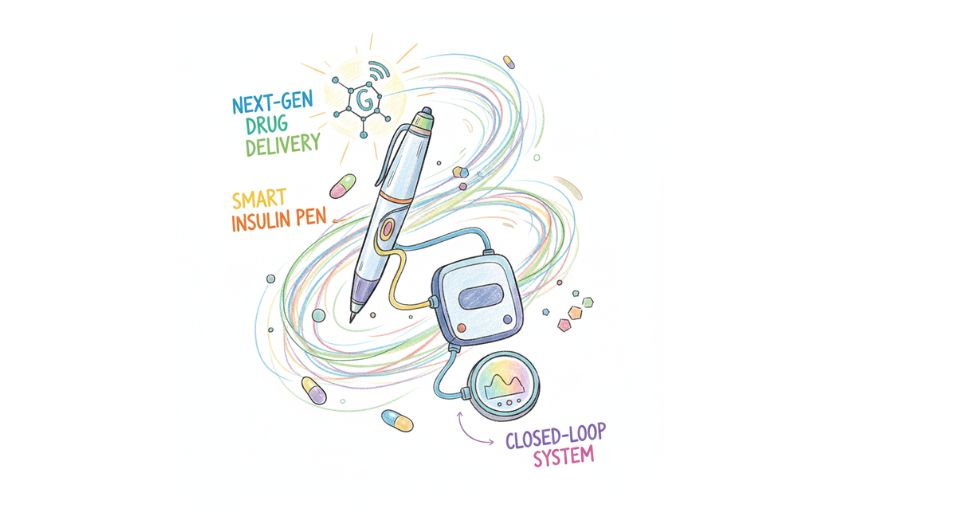
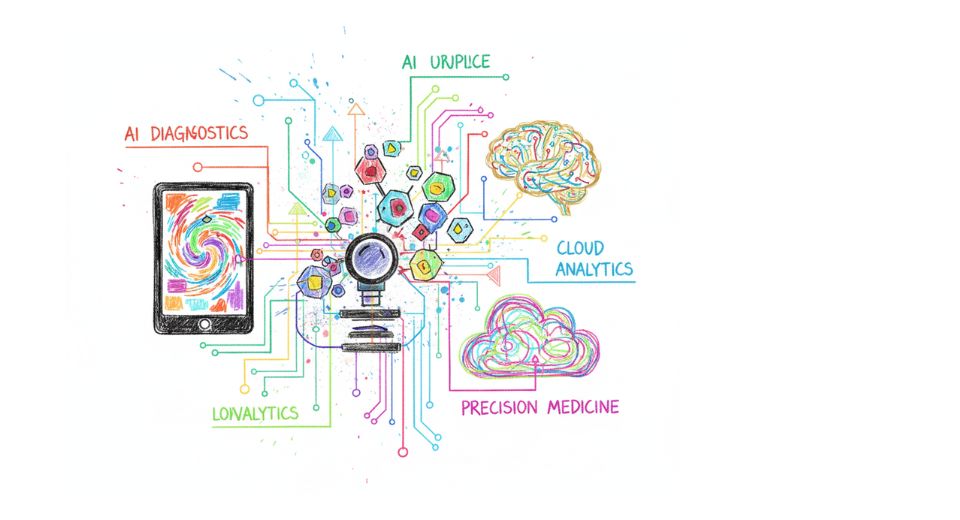


.jpg)
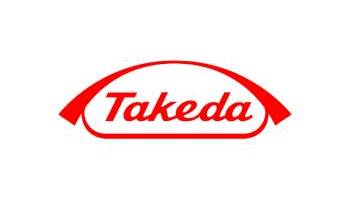
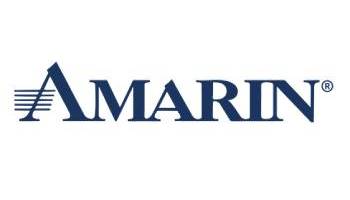


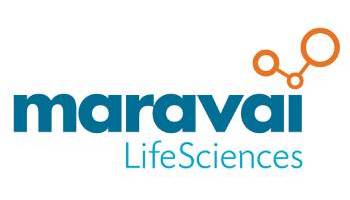
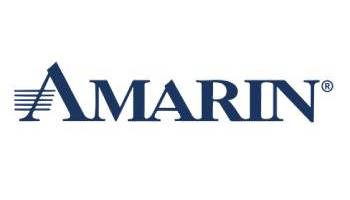


 US: +1 3023308252
US: +1 3023308252






